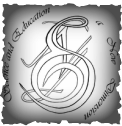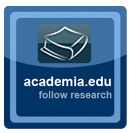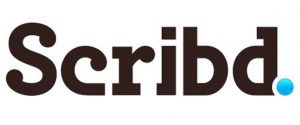Science and Education a New Dimension
Iss. 65. 2015.
O. V. Mazepova The concept of LEFT (čap) in the lingual consciousness of the Persian native speakers
Abstract. In the frameworks of modern anthropocentric linguistics the researches focused on explicating the semantics of conceptual binary oppositions inherent in various cultures are of particular interest. The “right-left” binary together with other oppositions such as “up-down”, “far-near”, “good-bad”, “self-other”, etc. belongs to basic cultural oppositions derived from ancient archetypical con- cepts. The paper explores the concept of LEFT (pers. “čap”) as a part of the “right-left” binary existing in the Persian lingual con- sciousness and by this example represents the methodic of studying concepts based on combining the cognitive linguistics approach with psycholinguistic experiment.
Keywords: binary opposition, cognitive approach, conceptual structure, lingual consciousness, psycholinguistic experiment
O. V. Mazepova The concept of LEFT (čap) in the lingual consciousness of the Persian native speakers
L. V. Mosiyevych Linguosynergetic parameters of euphemia/dysphemia in the English language
Abstract. The article suggests a new view of euphemia/dysphemia, namely from the angle of a new approach in modern linguistics, i.e. linguosynergetics. Euphemia/dysphemia are being represented as processes of cyclic self-organization of language system.
Keywords: dysphemism, euphemism, emergence, instability, linguosynergetics, openness, ternary
L. V. Mosiyevych Linguosynergetic parameters of euphemia/dysphemia in the English language
T. Nekriach, R. Dovganchyna Cultural Background as a Precondition of Adequacy in Translation (based on E.Hemingway’s short stories)
Abstract. The article focuses on the vertical context interpretation in the literary translation of E.Hemingway’s prose. The experiment proposed to the graduate students helps to outline the basic challenges brought about by the vertical context for the adequate interpretation of the author’s idea and its further reconstruction in translation.
Keywords: vertical context, interpretation, experiment, meaning and sense, understanding, background knowledge, historical and linguistic commentary
T. Nekriach, R. Dovganchyna Cultural Background as a Precondition of Adequacy in Translation (based on E.Hemingway’s short stories)
Yu. Popovych Challenges in Rendering Social Status Markers in the Translation of the XIX Century English Fiction
Abstract. The article gives an overview of the notion of social status in reference to sociolinguistics and translation theory. It seeks to explore some specific challenges the translators of the XIX century English fiction face in rendering the markers of a literary character social status, and to identify the gains and losses in the translation strategies and tactics used in the passages under consideration.
Keywords: literary translation, social status markers, XIX century English fiction, substandard language, deviations in speech
Yu. Popovych Challenges in Rendering Social Status Markers in the Translation of the XIX Century English Fiction
M. Ya. Salamakha Semantic Models of English Environmental Protection Terms
Abstract. In this article an attempt to analyze the English Environmental terms according to their semantics has been made, making a contribution for the standardization of the researched terminology. The terms of Environmental Protection have been semantically divided into three categories: with the main component of “body”, “action” and “property”. For terms of each group their semantic models have been built. Also the parallel analysis of their structure and semantics have been made, which made it possible to notice some regu- larities (rules) in term-formation. The given study contributes to the process of term-formation, because the results of the analysis show certain regularities between system of concepts, proving that a wide range of word-formative morphemes is used for the expression of semantic categories.
Keywords: term, terminological phrase, semantic model, structural model, lexical-semantic category
M. Ya. Salamakha Semantic Models of English Environmental Protection Terms
A. Yu. Shcherbak Idiolect of Fiction Character in Translation
Abstract: The article focuses on the role of idiolect in forming a multifaceted fiction character and its reproducing in translation. Any idiolect has certain structural features common for “lects”, which are viewed as varieties of the speaker’s community. The means of conveying idiolects of fiction characters in Ukrainian translations, be they native speakers or foreigners, are under study.
Keywords: idiolect, fiction character, sociolect, dialect, accent, translation.
A. Yu. Shcherbak Idiolect of Fiction Character in Translation
T. Schibrik National and cultural features of combinability of emotive particles in the German language
Abstract. The article deals with the matter of combinability of the emotive particles of the German language with each other. Emotive particles are divided into two classes: core and peripheral emotive particles. Some specific combinations of emotive particles can be typical to certain area of the German speaking language territory.
Keywords: emotive particles, combinability, semes, national and cultural features
T. Schibrik National and cultural features of combinability of emotive particles in the German language
D.O. Chystiak Phonetic symbolism in the early playwright of Maurice Maeterlinck
Abstract. The article deals with the presentations of phenomena of phonetic symbolism in the writings of symbolist French-speaking authors S. Mallarmé, R. Ghil, A. Mockel and others that influenced the phonosemantic conception in the early playwright of Maurice Maeterlinck. Besides, the analysis of his play “The Seven princess” is made according to the methods of contemporary phonosemantic studies.
Keywords: phonetic symbolism, phonosemantics, linguistic universals, symbol, myth
D.O. Chystiak Phonetic symbolism in the early playwright of Maurice Maeterlinck
K.M. Babyak Special features of structural and semantic organization of Cicero’s rhetorical terminology
Abstract. Rhetorical terminology of Cicero is a functional paradigmatically well-managed lexical-semantic system of related elements, which are in hyperohyponimical and other relations between each other. Semantical connection of separate words and notions and categorical communion of denotational sphere allows distinguishing semantical fields. Semantical fields of beautiful and funny with typical structure for the field are examined: core, centre and periphery. They are represented by such semantically typical tokens as: pulchritude, venustas and dignitas, turpitude, deformitas, iucundus, suavitas and others (semantic field of beautiful); facetiae, cavillatio and dignitas, turpitude, deformitas, contumeliae and other (semantic field of funny). Notions that reflect these tokens refer to moral-ethical sphere. The rest layers of terminological lexicology have formal character and demand other approaches to their research.
Keywords: rhetorical terminology, esthetic lexicology, lexicology of funny, denotative sphere, semantic field
K.M. Babyak Special features of structural and semantic organization of Cicero’s rhetorical terminology
O.M. Bazhan Proper Names in Russian Advertising Text
Abstract. The article deals with features of functioning of proper names in the Russian advertising text. It defines and investigates the case of proper names and their place in the structure of Russian advertising text. The article decides the functions of proper names in advertising texts; analyzes the peculiarities of structures and usage of proper names in Russian advertising texts of the beginning of the 20th and the beginning of the 21st centuries.
Keywords: proper name, advertising text, pragmatonym, anthroponym, toponym
O.M. Bazhan Proper Names in Russian Advertising Text
K.A. Bilyk A corpus-based approach to consociation analysis in a poetic text
Abstract: The article discusses the corpus linguistic approach to the investigation of the accociative layer of the poetic concept in the poetic picture of the world in a corpus of poetic works by R. M. Rilke. It suggests a method to determine statistically, whether a lexeme is relevant for the analysis of the associative layer of the poetic concept or not. This statistical measure is equally relevant for the analysis of the poetic text, as well as for the analysis of a functional text, as it is syntactically independent.
Keywords: corpus linguistics, poetic picture of the world, poetic concept, association, consociation, R.M. Rilke
K.A. Bilyk A corpus-based approach to consociation analysis in a poetic text
I.V. Bondarenko About the border of a proper name and a common noun
Abstract. The article analyzes some of the criteria for distinguishing proper names and common nouns, marks out the most substantial differences in their semantics. It considers the question of functioning of these onomastic units in a language and in speech.
Keywords: proper names, common nouns, connotation, designatum
I.V. Bondarenko About the border of a proper name and a common noun
O.V. Boron Genesis and poetics of the story by Taras Shevchenko “The Convict”
Abstract. The article reviews the problem of dating of the story by Taras Shevchenko The Convict. It analyzes probable sources of the work including folk legends which rank high among them. It clarifies narrative structure peculiarities of the story as well as some of the lesser known features of its poetics.
Keywords: composition, story, plot, system of characters, genre
O.V. Boron Genesis and poetics of the story by Taras Shevchenko “The Convict”
I.D. Vepryniak Cognitive Model of Perceiving Reality by the Personage of “The Snake Pit”, the novel by Mary Jane Ward: Oneirotextual Perspective
Abstract. Within linguo-cognitive paradigm text formation is regarded as a verbally fixed projection of a linguistic personality`s cognitive model, externalization of a subject`s consciousness in a lingual format. The article examines the peculiarities of linguistic explication of a character`s oneiric reality in a literary text. In an effort to illustrate language representation of the cognitive model of a fictional character`s subjective psychic reality, the oneiric fragments of the novel “The Snake Pit” written by Mary Jane Ward, were analysed. On the basis of linguo-textual projection of the dominant mental-psychological phenomena, idiosyncratic cognitive model of the character`s reality perception was investigated in the context of two dimensions: the pattern of perceiving phenomena of the exterial environment – alopsychic orientation, as well as the pattern of perceiving phenomena of one`s own internal environment – autopsychic orientation.
Keywords: cognitive model of reality perception, allopsychic orientation, autopsychic orientation, language (verbal) representation, oneiric space of a literary text, inner speech of a personage
I.D. Vepryniak Cognitive Model of Perceiving Reality by the Personage of “The Snake Pit”, the novel by Mary Jane Ward: Oneirotextual Perspective
L.V. Domylivska Y. Yanovskyy’ and S. Pshybyshevskyy’ neoromantic prospects: language symbol’ parallels
Abstract. This article deals with the problem of language symbol’s functions in the S. Pshybyshevskyy’ and Yanovskyy’ works. Also application of synthetic methods in stylistic analysis of works of art are motivated. This approach allows to analyze language representation of artistic consciousness through the context of culture, psychological and social motivation. The research presents the main differences symbol’ functioning in individual styles of S. Pshybyshevskyy’ and Yanovskyy’ works of art based on linguistic analysis of poetic world view. The author distinguishes original and common features of authors’ artistic extention taking into con- sideration development of Slavic fiction.
Keywords: individual style, language consciousness, author’s artistic extention (space), language symbol, functional and stylistic interpretation
L.V. Domylivska Y. Yanovskyy’ and S. Pshybyshevskyy’ neoromantic prospects: language symbol’ parallels
V.V. Kolkutina Forming and evolution of literary historiography of D. Doncov
Annotation: The stages of forming and evolution of Dmytro Doncov as a historian of literature are probed in the article. It is found out, that ending of his ideological and aesthetical conceptions during three stages was determined the epoch of considerable political and social changes, sometimes cardinal changes of leading vectors of development of human civilisation. History of west-european and Ukrainian literature in conception of researcher leaned on the collision of world and national history, seen them in the fight of political forces of epoch.
Keywords: literary historiography, stages of forming of views, conception of state literature
V.V. Kolkutina Forming and evolution of literary historiography of D. Doncov
I.V. Romanyuk Nonverbal communication in his character's speech: gender aspect
Abstract. The article investigates nonverbal communication with regard to their gender aspect on the material of Dialogic texts by I. S. Nechui-Levitsky. Gender status of participants of communicative process affects not only the strategy and tactics of verbal com- munication, but also for its tone, style, character.
Keywords: communication, nonverbal communication, gender, gestures, facial expressions, gaze
I.V. Romanyuk Nonverbal communication in his character’s speech: gender aspect
L.F. Ukrainets The explication of sonority of Ukrainian poetic language in the context of author's impressions
Abstract. This article deals with the role of sonority that takes part in the formation of emotional and semantic layers’ system and influences on meanings of nominative and communicative units in Ukrainian poetic language. Sonority as linguistic and stylistic category, modeled by sonant and sonorous consonants, tightly interlaces with the notion of literary language euphony, opening its functional and stylistic properties just in poetic language due to author’s impressions.
Keywords: connotation, sonority, euphony, poetic language, lexeme, linguistic and stylistic category
L.F. Ukrainets The explication of sonority of Ukrainian poetic language in the context of author’s impressions
M.V. Tsurkan Household lexicon as a means of stylization of spoken language in prose writers of Bukovina in the early twenty-first century
Abstract. In the article the problem of household vocabulary use as a means of spoken stylization in the literary text is analyzes, the latest and common household vocabulary is presented ued in the works of Bukovina writersat the beginning of the XXI century.
Keywords: category of spoken language, stylization, household vocabulary, codification source, linguistic creativity of Bukovina writers
M.V. Tsurkan Household lexicon as a means of stylization of spoken language in prose writers of Bukovina in the early twenty-first century
A. Sherepitko Cognitive discourse models of Eternity
Abstract. The article is devoted to the specifics of the linguistic cognitive discourse analysis of concepts, the cognitive discourse modelling method is demonstrated on the example of Eternity-concept, the stereotypical representation of concept name in the russian language use are explicated and the basic cognitive discourse models of Eternity actual for modern of russian language and culture are reconstructed.
Keywords: concept, discourse, cognitive discourse model, cognitive modelling, discourse representations
A. Sherepitko Cognitive discourse models of Eternity







